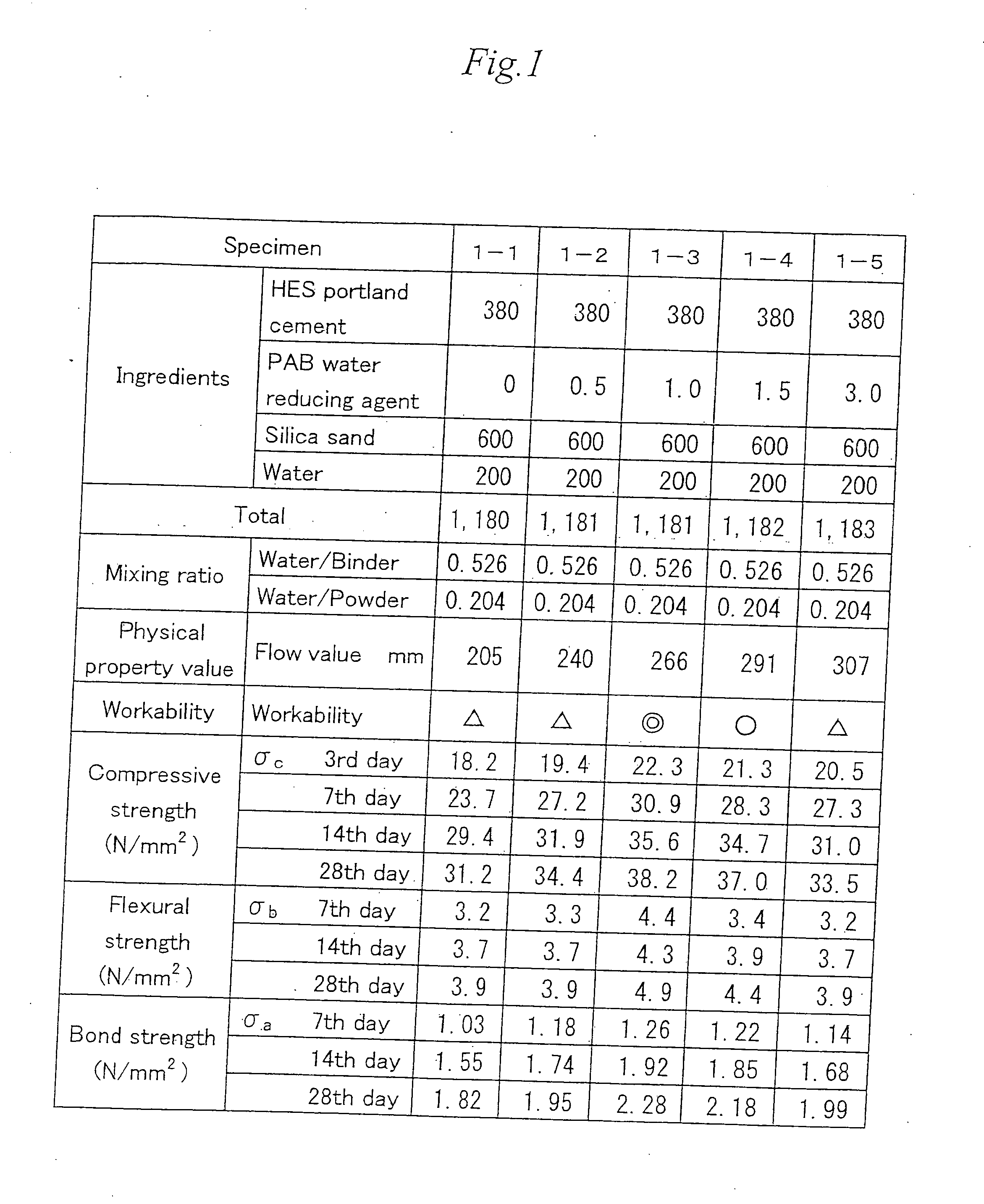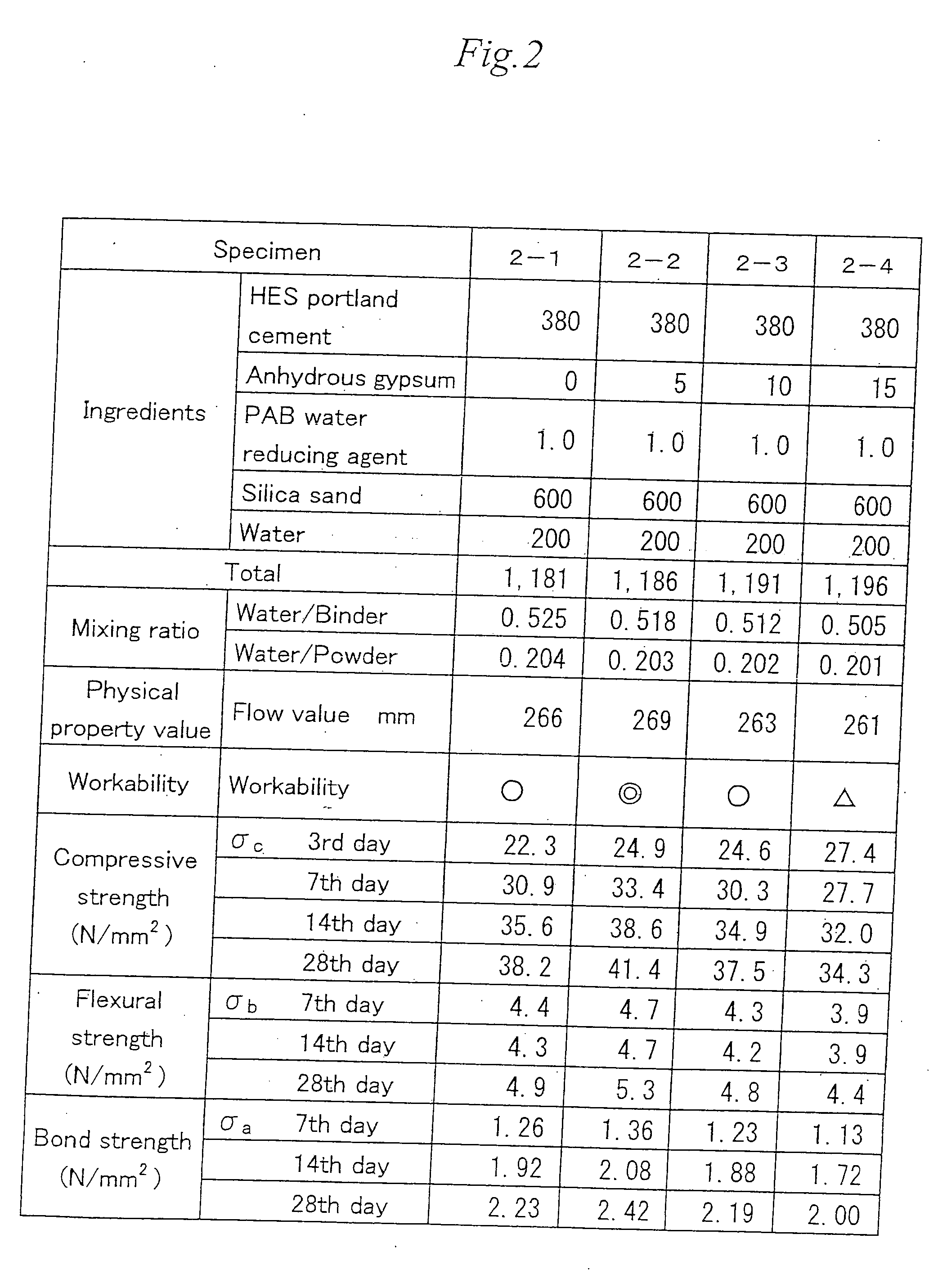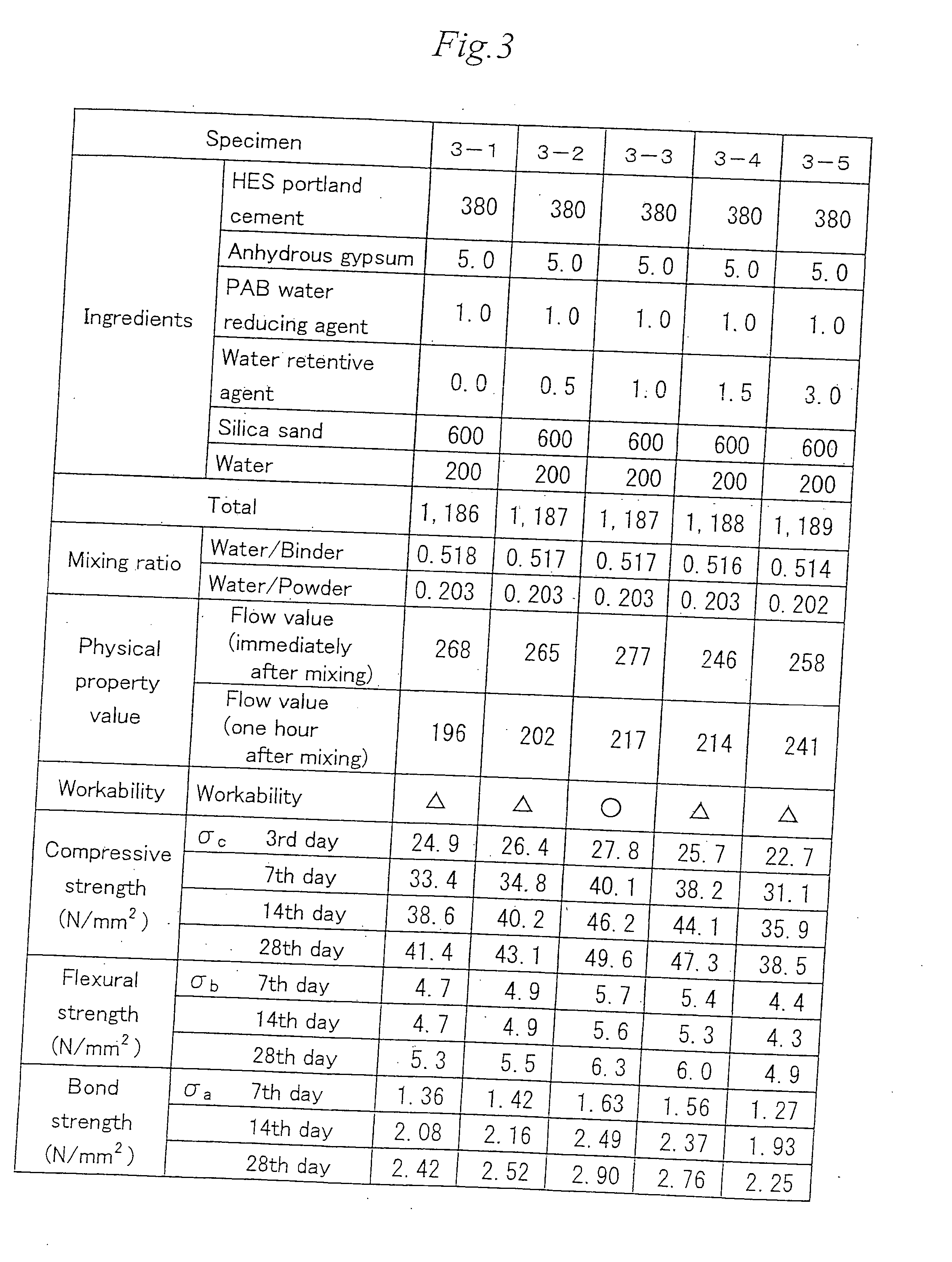Mortar composition
a technology of composition and mortar, applied in the field of mortar composition, can solve the problems of affecting workability, affecting the use of mortar, and affecting the use of mortar, and achieve the effect of requiring bonding strength and being easily infiltrated
- Summary
- Abstract
- Description
- Claims
- Application Information
AI Technical Summary
Benefits of technology
Problems solved by technology
Method used
Image
Examples
examples
[0072] In the following, several examples will be described in which, embodiments for ascertaining suitable amounts of polycarboxylic acid-based water reducing agent, anhydrous gypsum, a water retentive agent, a carbon-based powder, an anti-foaming agent and water, as materials for a mortar composition in accordance with this invention are given.
[0073] [Optimization of Polycarboxylic Acid-Based Water Reducing Agent]
[0074] In the present invention, a polycarboxylic acid-based water reducing agent is added to a mortar composition to disperse mortar materials (cement particles) uniformly in water. This enables water content in the mortar composition to be reduced at the same time to maintain softness to such an extent that workability is ensured.
[0075] Conventionally, numerous researches have been performed for using a polycarboxylic acid-based water reducing agent in a mortar composition. A polycarboxylic acid-based water reducing agent is highly capable of uniformly dispersing mort...
PUM
| Property | Measurement | Unit |
|---|---|---|
| Weight | aaaaa | aaaaa |
| Fraction | aaaaa | aaaaa |
| Fraction | aaaaa | aaaaa |
Abstract
Description
Claims
Application Information
 Login to View More
Login to View More - R&D
- Intellectual Property
- Life Sciences
- Materials
- Tech Scout
- Unparalleled Data Quality
- Higher Quality Content
- 60% Fewer Hallucinations
Browse by: Latest US Patents, China's latest patents, Technical Efficacy Thesaurus, Application Domain, Technology Topic, Popular Technical Reports.
© 2025 PatSnap. All rights reserved.Legal|Privacy policy|Modern Slavery Act Transparency Statement|Sitemap|About US| Contact US: help@patsnap.com



